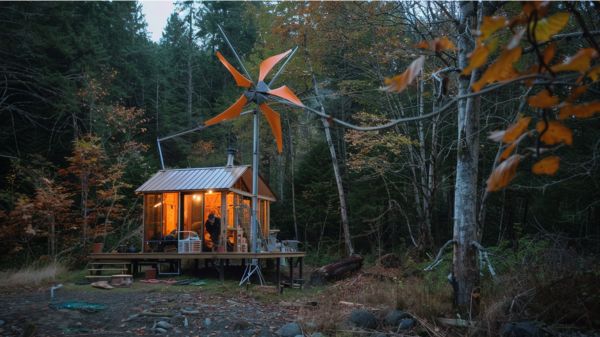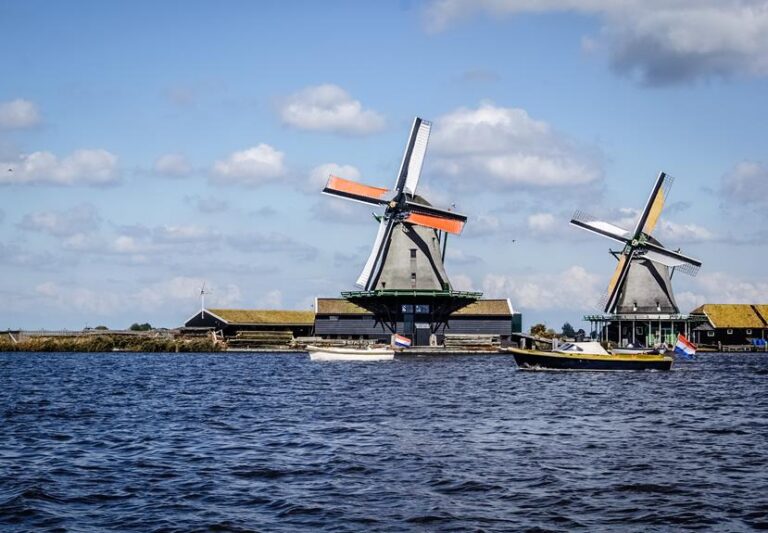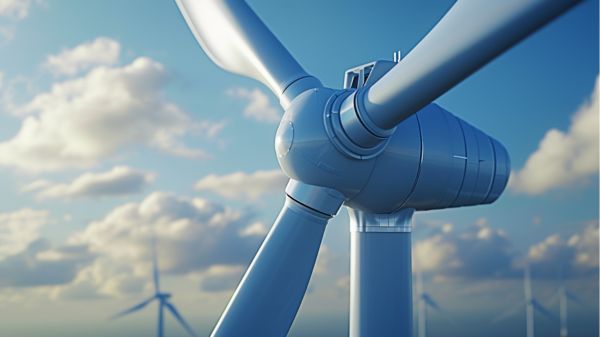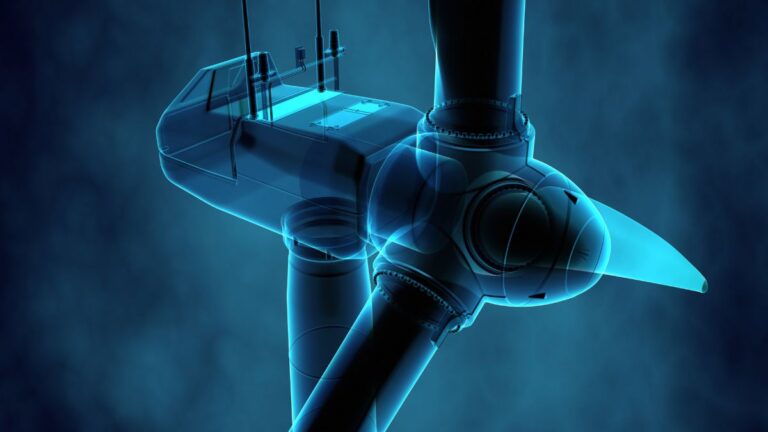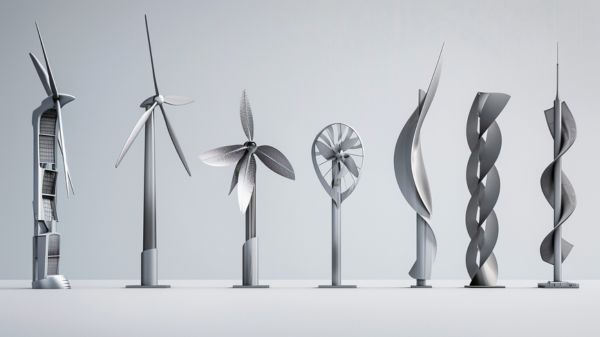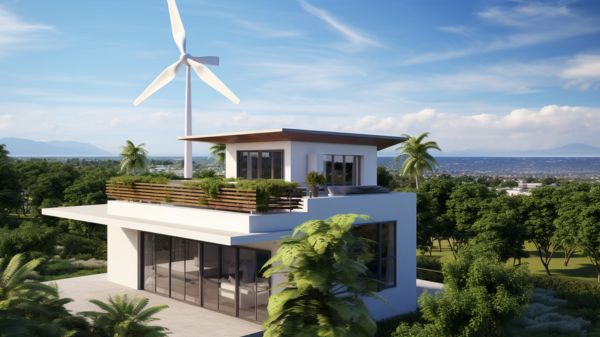Building Your Own Wind Turbine for Off-Grid Cabins
Did you know that the average wind turbine can generate enough electricity to power about 1,500 homes? Imagine the possibilities of harnessing wind energy by building your own wind turbine for off-grid cabins.
With the right components and a bit of know-how, you could be on your way to creating a sustainable power source that is both eco-friendly and cost-effective.
But how exactly do you go about building your wind turbine, and what are the crucial steps to ensure its efficiency and longevity? Let’s explore the essentials of constructing a wind turbine for off-grid cabins and how you can make the most of this renewable energy solution.
Key Takeaways
- Understand blade design and placement for optimal energy production.
- Combine wind and solar power for off-grid energy efficiency.
- Choose durable components and strategic turbine locations.
- Tailor DIY wind turbine to specific off-grid cabin energy needs.
Wind Turbine System Selection
When choosing a wind turbine system for your off-grid cabin, start by assessing the power requirements of your essential appliances. Calculate the total power consumption of devices like lights, refrigerator, and electronics to determine the size of the system needed.
Consider the average wind speeds in your area to select appropriate turbine blades that can efficiently harness wind power. Additionally, evaluate the capacity of the battery bank required to store excess energy generated by the turbine.
Ensuring that your system is matched correctly to your power needs will optimize performance and provide reliable electricity for your cabin. Make informed choices to liberate yourself from dependence on traditional power sources.
Related Post: The Best Home Wind Turbines for 2023: Revolutionary Wind Power.
DIY Wind Turbine Components
To build a DIY wind turbine, essential components include blades, a mounting assembly, a tail assembly, a generator, a power inverter, a battery bank, and a charge controller. The proper selection and quality of these components are crucial for an efficient off-grid power system.
When assembling your wind turbine system, make sure to pay attention to the following:
- Turbine Blades: Choose durable, aerodynamically designed blades for optimal energy capture.
- Generator: Select a high-efficiency generator to ensure fast battery charging and overall system performance.
- Charge Controller: Incorporate a reliable charge controller to prevent overcharging and regulate power flow within your system effectively.
These components work in tandem to harness wind energy and convert it into usable electricity for your off-grid cabin.
Tower Installation Guidelines
For optimal wind turbine performance and safety, precise tower installation guidelines must be followed to ensure stability and efficiency in power generation. When considering tower height, remember that taller towers can capture stronger and more consistent wind speeds, enhancing energy production.
Proper installation techniques are vital, as they guarantee the safety and stability of the entire system. Choosing high-quality materials for the tower construction is essential for long-term durability and performance. Securely anchoring the tower to the ground is crucial to withstand various weather conditions.
Below is a table summarizing key aspects of tower installation guidelines:
| Tower Height | Proper Installation | Tower Material |
|---|---|---|
| Impact on efficiency | Ensures safety and stability | Quality is crucial for durability |
| Taller towers capture stronger winds | Vital for system safety | High-quality materials are essential |
| Enhanced energy production | Precision is key | Long-term performance benefits |
| Consistent wind speeds | Stability is ensured | Durability is a priority |
| Better power generation | Efficiency is optimized | Performance is enhanced |
Wiring and Battery Connection
Ensure efficient power transmission from the wind turbine to the battery bank by implementing proper wiring techniques and connections. Use heavy-duty cables to handle the power generated by the turbine.
Connect the wind turbine to a charge controller to regulate the charging process and prevent battery damage. Implement a fuse or breaker in the wiring system for safety in case of power surges.
When setting up the wiring and battery connection for your wind turbine, remember that this step is crucial for achieving energy independence. By following the right wiring practices and integrating a charge controller, you can optimize your off-grid power system.
Make sure to maintain and inspect these connections regularly to keep your system operating at its best.
Wind Turbine Maintenance Tips
Inspecting and maintaining your wind turbine regularly is essential to ensure optimal performance and longevity. Check turbine blades for damage or wear, as this can impact efficiency.
Keep the turbine tower free from debris to prevent interference with wind flow, which affects energy generation. Ensure all moving parts are properly lubricated to prevent premature wear and tear.
Monitor battery bank connections and voltage levels to guarantee peak performance and extend battery life. Regularly inspect and clean electrical connections to prevent corrosion and ensure a reliable power supply.
Monitoring and Troubleshooting
To ensure optimal performance, regularly monitor your battery voltage and charging levels. If you notice fluctuations in power output, check connections and system components for any issues. Keeping track of energy production levels over time will help you assess your wind turbine’s efficiency.
System Performance Tracking
Regularly monitoring the performance of your off-grid wind turbine system is essential for optimizing energy efficiency and identifying any potential issues promptly. To track your system effectively, consider the following:
- Monitoring system performance: Keep an eye on energy production and consumption levels in real-time.
- Power generation patterns: Analyze data to understand when your turbine generates the most power and plan maintenance accordingly.
- Troubleshooting: Check connections, battery health, and turbine integrity to ensure smooth operation and address issues like low power output or battery drainage efficiently.
Regular monitoring allows for adjustments to optimize turbine efficiency and overall system performance.
Identifying Common Issues
Tracking the performance of your off-grid wind turbine system is crucial for swiftly identifying and troubleshooting common issues that may arise. Monitoring wind speed, power consumption, and the homemade wind turbine’s output regularly can help you detect any deviations from expected performance.
By establishing a maintenance schedule that includes visual inspections and component checks, you can preemptively address potential problems before they escalate. Understanding the typical wind patterns in your area and how they affect your turbine’s efficiency is key to diagnosing any performance issues.
Consider incorporating remote monitoring systems for real-time data analysis, enabling you to stay informed of any anomalies promptly. Stay vigilant for unusual noises, vibrations, or fluctuations in power output, as these can indicate underlying problems that require attention.
Troubleshooting Tips
Ensure consistent power supply by regularly monitoring battery levels, checking turbine blades, testing voltage output, troubleshooting wiring connections, and adapting to weather conditions.
To troubleshoot effectively, follow these steps:
- Monitor Battery Levels: Keep track of the battery charge to prevent power interruptions.
- Check Turbine Blades: Inspect for any damage or debris that could hinder performance.
- Multimeter Testing: Use a multimeter to verify the voltage output for optimal efficiency.
Maximizing Wind Energy Efficiency
To maximize wind energy efficiency, ensure your turbine is mounted at a height of 30 feet for increased energy output.
Positioning the turbine on a sturdy tower and aligning the blades correctly to the wind direction are crucial for optimal performance.
Incorporating a well-designed tail fin can enhance efficiency by keeping the turbine properly oriented for maximum power generation.
Blade Design Tips
When designing blades for a wind turbine aimed at maximizing wind energy efficiency, consider the length, material, angle, and curvature to optimize power generation. To enhance efficiency:
- Length: Longer blades capture more wind energy, increasing power output.
- Material: Choose durable materials to ensure longevity and performance.
- Angle: Proper blade angle is crucial for effective wind energy conversion.
Blade design plays a significant role in the overall efficiency of wind energy generation. Curved blades, specifically designed to harness wind power effectively, are instrumental in maximizing the turbine’s performance. By carefully considering these factors during the blade design process, you can boost the efficiency of your off-grid cabin’s wind turbine setup.
Wind Turbine Placement
For optimal wind energy efficiency, strategically placing wind turbines is crucial to maximize energy production and overall performance. To harness the power of wind and solar in your off-grid cabin, consider placing your wind turbine at higher altitudes where wind speeds are typically stronger. Clear any obstructions such as trees or buildings that could disrupt wind flow and decrease turbine efficiency.
Take note of prevailing wind directions to position your turbine for maximum energy capture. Utilize wind mapping tools to identify prime locations for wind turbine installation. Additionally, ensure proper spacing between turbines to minimize turbulence and enhance overall wind energy output.
Related Post: Affordable Sustainable Living With Small Wind Turbines for Homes.
Frequently Asked Questions
How Much Does a off Grid Wind Turbine Cost?
The cost breakdown for an off-grid wind turbine varies based on factors like turbine size and installation complexity. You can optimize costs by considering tower height, maintenance tips, and energy efficiency for long-term savings.
How Much Power Can a Homemade Wind Turbine Generate?
In ideal conditions, a homemade wind turbine can generate around 400-500 watts of power. Factors like wind speed, turbine size, and blade design impact power output. Regular maintenance enhances efficiency. Consider energy demands for proper sizing.
Is DIY Wind Turbine Worth It?
Building your own wind turbine is worth it for off-grid cabins! Pros include customization and lower energy costs. Necessary materials are affordable, and the step-by-step process is rewarding. Maintenance tips ensure longevity.
Can I Make My Own Wind Turbine at Home?
You can absolutely make your own wind turbine at home! With the right materials, DIY designs, installation process, and maintenance, you can harness wind power effectively. It’s a rewarding project for sustainable energy solutions.
Conclusion
Building your own wind turbine for off-grid cabins is a practical and cost-effective way to generate electricity sustainably. By carefully selecting the right components, installing them correctly, and following maintenance guidelines, you can create a reliable energy source for your remote location.
For example, a DIY wind turbine system powered a small off-grid cabin in Alaska, providing enough electricity to run essential appliances and lighting, reducing the reliance on fossil fuels.
Start building your wind turbine today and enjoy the benefits of renewable energy.
